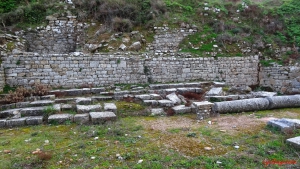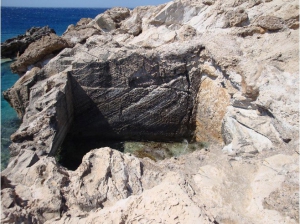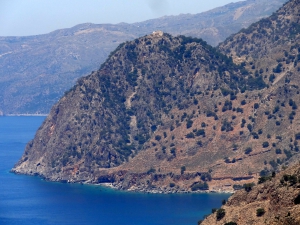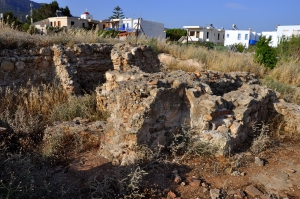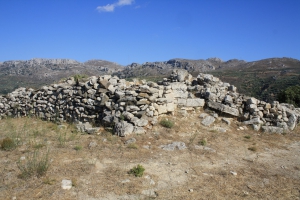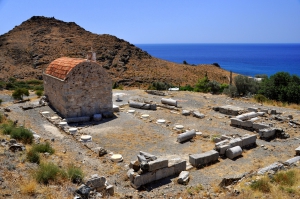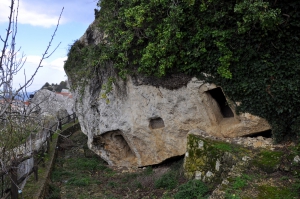Ancient Lyktos or Littos is located near the settlement of Xidas. The city was one of the strongest of ancient Crete, an eternal enemy of Knossos and owned the port of Hersonissos. It is reported by all the major ancient historians.
At position Vothoni we meet the Roman fish tanks that were carved by the Romans in the soft sandstone, with a small opening to the sea to allow fresh water to flow in.There are worn steps in one corner.
The exit of Tripiiti Gorge hosted the ancient town Poikilasos or Poikilasion, but today you will see only a few scattered traces.
The fertile valley and the sheltered harbor of Makrigialos was an ideal location for its habitation throughout the ages. One of the relics of the past is the Roman villa which was unearthed at Katovigli position in 1977, above the current port of Makrigialos, by the archaeologist N. Papadakis. Earlier, looted graves and a headstone of the 4th century AD were found on site.
Praesus (or Pressos) was built on three hills located about 13km south of Sitia and 2km from Nea Pressos. The city was founded by the Eteocretans (= genuine Cretans) who abandoned the Minoan towns and found refuge in the inaccessible areas of Crete after the Dorian invasion (1100BC). It owned two ports, one in Sitia region (Etea) and one on the south coast (Stiles).
Lendas is built on the site of the ancient city Levina, 74km south of Heraklion, on the southern slopes of the imposing Asterousia Mountains. The name of Levina is believed to come from the Phoenician “Lavi” which means Lion. Indeed, on the west of the village there is a cape reminding of a lion's head from far.
The town of Hyrtakina was built on the steep Kastri near the village Temenia and flourished in the Hellenistic Times. Today the vegetation has covered most parts of the ancient city.
Agios Thomas (Saint Thomas) is one of the most impressive mountain villages of Crete. This is mainly due to the rocks of the region that are easy to carve. Excellent monuments of carved architecture travel us to ancient times with carved Minoan presses, Roman tombs and cavernous temples.











